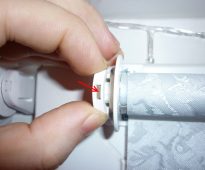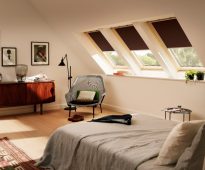 Step by step instructions on how to assemble roller blinds.
Step by step instructions on how to assemble roller blinds.
Types of fabrics for curtains: what are the photos and names
Curtains create a special atmosphere in the room, advantageously emphasize the dignity of the interior. A variety of colors and textures of curtain materials helps to make the window stylish and functional.
From the selected material will depend on the type of finished window textiles and the room as a whole.
Content
- 1 Curtain fabric: a variety of materials for which curtains which fabric is best
- 2 Curtain fabrics: description, name and photo of fabrics for curtains, recommendations for choosing
- 3 Curtain fabrics: description, name and image of the fabric, the specific choice for curtains
- 4 Types of lightweight fabrics for curtains: translucent and transparent fabrics, the name and description of materials
- 5 Cheap fabrics for curtains
- 6 VIDEO: Selection of fabric for curtains.
- 7 50 ideas for curtains from modern materials:
Curtain fabric: a variety of materials for which curtains which fabric is best
When choosing a material for curtains take into account the following characteristics:
- Composition (natural, synthetic, mixed);
- Density of a cloth, propensity to draperies;
- Wear resistance (to ultraviolet, mechanical stress, the effects of cleaning products).
The range of the proposed tissue affects diversity.
Modern technology makes the fabric practical. Thanks to special impregnations, they become waterproof, tough (able to hold a shape), wrinkle-free, not fadeable under direct sunlight.
The variety of materials available for curtains is updated with the development of new technologies.
In addition, the processing makes the material resistant to odors, and non-flammable.
The leaders in popularity are velvet, chenille, jacquard, taffeta, veil and organza. Natural fabrics are also in demand: flax, cotton, wool and silk.
Luxurious for classic style curtain fabrics (velvet or jacquard). Dense and heavy drapes are beautifully draped and look elegant even in complex designs with lambrequins and svagami.
Portieres are almost always complemented with thin tulle covering the window during the daytime.
Modern style prefers natural or high-quality synthetic fabrics. Since practicality is valued in this area of interior design, modern know-how is also actively used. For example, blackout fabrics that can reliably protect from sunlight, unnecessary sounds, as well as warm in winter and add coolness in hot summer.
Light-proof fabric that is made from polyester fiber with single or double satin weaving.
Curtain fabrics: description, name and photo of fabrics for curtains, recommendations for choosing
Undoubtedly, natural drape fabric - the best choice.
If you want the curtains to serve you for a long time, choose fabrics treated with protective compounds.
Linen perfect for modern style, as well as for the decoration of windows in exquisite classics. Benefits:
- Durability;
- Resistance to UV light;
- Easy to wash;
- Strength.
Lyon has a rough texture and a peculiar structure, has high mechanical strength.
Disadvantages:
- High price;
- Crushability;
- Shrinkage after washing;
- Requires the use of special detergents.
In the photo linen curtains in a modern interior.
Flax does not accumulate static electricity on its surface, does not form a nap.
Gunny more rough on the invoice material. A characteristic difference is the chess interlacing of threads. The fabric is made of natural fibers with the addition of synthetic materials. The surface can be fleecy or smooth. Advantages of matting:
- Durability;
- Defies strain;
- It does not require special care;
- Spectacular appearance: even a simple model looks nontrivial.
The gunny is easily recognized by a rough texture, similar to burlap and a checkerboard pattern.
Disadvantages:
- The edges fall off;
- Cloths remain on the canvas, not recommended for apartments with pets.
Gunny without ornament. Bulky drape and rich color create a cozy atmosphere.
Curtains of this fabric look very original, despite the uncomplicated appearance.
Gabardine. Made from natural fibers: wool, cotton or silk. Dense texture is achieved due to the diagonal interlacing of threads.
Advantages:
- Durability;
- Air permeability;
- Does not deform during washing;
- Ease of care;
- Water resistant.
The main feature is considered to be a diagonal weave, which gives density and relief.
Disadvantages:
- Tendency to fall;
- Sewing can damage the needle.
Portieres from monophonic gabardine of pleasant brown color. The model complements the light tulle of the same shade.
Gabardine - fabric with a natural composition.
Luxurious velvet - addition to the classic interior. The pleasant soft texture and ability to drape beautifully allow you to create curtain masterpieces. Velvet is able to protect not only from excess light, but also to provide noise insulation. Despite saturated colors, it is not prone to fading and can be applied to windows on the sunny side.
Good for curtains with drapes, perfectly protects the room from the sun's rays, noise.
Deciding to stop the choice on this material, the following is worth the honor:
- Curtain rod curtain should be durable, as velvet is heavy;
- Velvet is appropriate only in large rooms, and in small ones it will visually reduce the size of the room.
The interior with velvet curtains of bright color is complemented by decorative pillows from the same fabric.
Its good to use in classic interiors for the formation of the solemn appearance of the room.
The complex weaving of threads in a jacquard canvas allows you to create amazing drawings and ornaments. Due to the texture and color of the material, the curtains are especially beautiful and stylish.
Jacquard is a material with a two-layer pattern due to weaving of threads.
Jacquard fabrics do not fade in the sun, do not require special care, and a huge assortment of colors allows you to choose an option for any style.
Jacquard is a beautiful, durable and very durable large-necked fabric.
Curtains of jacquard fabric with a plain pattern will decorate the living room. Even without the addition of tulle look organic.
Curtain fabrics: description, name and image of the fabric, the specific choice for curtains
The range of fabrics for curtains is huge. Here are some of the possible options.
Organza - non-wrinkle-resistant fabric, durable, translucent. Not only curtains are made of it, but also canopies and canopies in bedrooms, and other decorative elements of the interior.
The use of organza curtains creates a cozy and fabulous atmosphere of the East indoors.
Keeps form and allows you to create sophisticated complex designs.
Grid - a cloth made by hand or using special knitting machines. As a rule, natural threads are used for its production: cotton, linen or wool. Synthetic analogs of viscose or acetate are found.
The shape of the grid cells is varied. But any, even the most concise model looks spectacular.
One of the most expensive options for curtains - guipure. Significant difference from others in the refinement of color and texture. As a rule, guipure is painted in pastel colors, which, in combination with air patterns, create a light, weightless haze around the window. It is better if such curtains are used independently, without portieres. Then it is possible to evaluate the sophistication of the canvas.
Guipure is made both manually and on special equipment.
Guipure needs special care. Erase it only by hand. Do not wring out so as not to damage the canvas.
Types of lightweight fabrics for curtains: translucent and transparent fabrics, the name and description of materials
The most popular among the translucent curtain fabrics considered veil. It is soft and dull. You can create different designs from it, because, despite its lightness and airiness, it keeps its shape perfectly.
Today, the most common synthetic veil. Earlier this material was made exclusively from natural fibers.
Veil - translucent smooth and thin material with a matte surface.
The disadvantages of the veil include the difficulty of removing oily stains, as well as its ability to attract dust. Finally, if direct sunlight hits the canvas, the fabric loses its original color.
Lightweight translucent veil with drapery can be used without curtains. A variety of colors allows you to create real masterpieces for window decoration.
Another option translucent curtains - muslin. The advantage of such curtains is universality.
Woven curtains are used for window and door openings, for zoning space, and as a spectacular decorative element of the interior.
Such curtains in the interior give a feeling of complete freedom and transparency of the surrounding space.
Cheap fabrics for curtains
Synthetic or mixed materials - the most budget options. Polyester, acrylic and nylon — soft, with ease, beautifully drape. Harmoniously complement any style. The variety of colors will allow you to choose the fabric for the interior.
Luxurious polyester curtain design. Straight canvas with contrasting pickups. Perfect color combination.
Polyester does not wrinkle, keeps its shape and does not shrink after exposure to temperature.
Japanese polyester panels. The competent choice of color guarantees a stylish interior design.
Pick the length of the curtains in accordance with the idea.
Unusual solution: orange polyester pleated blinds.
Material properties allow you to create persistent folds on the product of polyester, if necessary.
It should be noted that each of the models is simple in execution, and if you wish, you can create such curtains at home. This will save on window decoration without sacrificing elegance and beauty.
To your curtains served you as long as possible, you must follow the rules of care for them.
The choice of fabrics for curtains is huge. Curtain or curtain fabric does not have to be expensive. Fantasy and non-standard approach to the design of the room will make the interior truly unique.
VIDEO: Selection of fabric for curtains.
50 ideas for curtains from modern materials:
 Step by step instructions on how to assemble roller blinds.
Step by step instructions on how to assemble roller blinds.
 About roller blinds for roof windows, and other types of non-standard windows
About roller blinds for roof windows, and other types of non-standard windows






